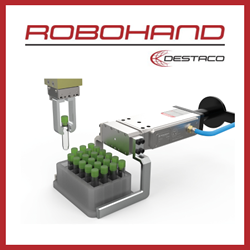Biohybrid Robots Break New Ground: Where Biology Meets Robotics
Biohybrid robots—fusing living tissues with tech—are breaking barriers! From self-healing robot skin (Japan, 2024) to muscle-powered walkers & AI-enhanced jellyfish (Caltech/MIT), these innovations promise to transform medicine, ocean exploration & more. The future of robotics is alive!
Biohybrid Robots Break New Ground: Where Biology Meets Robotics
The future of robotics is here, and it's alive—literally. Scientists worldwide are making astonishing progress in biohybrid robots, machines that blend living tissues with synthetic materials to create smarter, more adaptable systems. From self-healing skin to muscle-powered movement, these innovations are pushing the boundaries of what robots can do.
Recent Breakthroughs Shaping the Field
Just last month (September 2024), a team of Japanese researchers led by Professor Shoji Takeuchi stunned the world with a robot face covered in living skin—capable of smiling and even repairing itself. This leap forward could revolutionize prosthetics, making artificial limbs and robotic interfaces more lifelike than ever before.
Not to be outdone, engineers at Caltech made waves in August 2024 by supercharging jellyfish with tiny electronics. These biohybrid jellyfish robots swam faster and more efficiently, offering a game-changing tool for deep-sea exploration and climate research.
Meanwhile, MIT researchers took a different approach in April 2024, designing a spring-like "flexure" skeleton that supercharges muscle-powered robots. Their breakthrough allowed biohybrid bots to move five times more effectively, a major step toward agile, muscle-driven machines.
And earlier this year (January 2024), scientists in Japan successfully built a two-legged walking robot using lab-grown human muscle tissue and silicone. Though it moved slower than a snail (just 5.4 mm per minute), the experiment proved that biohybrid systems can mimic human motion—an exciting glimpse into the future of robotics.
Why This Matters
Biohybrid robots aren't just lab experiments—they could soon transform industries:
Healthcare: Imagine surgical robots with living tissues that heal, or prosthetics that move like real limbs.
Environmental Science: Enhanced jellyfish or algae could monitor ocean health or clean up pollution.
Manufacturing & Assistive Tech: Soft, muscle-driven robots could handle fragile objects or assist the elderly.
Challenges Ahead
Of course, there are hurdles. Keeping living tissues functional long-term, improving energy efficiency, and addressing ethical concerns are all critical issues researchers must tackle. But with investment pouring in and global interest growing, solutions may arrive sooner than we think.
According to Roots Analysis, the biohybrid robotics market is set for explosive growth as breakthroughs in AI, tissue engineering, and materials science converge. What was once sci-fi is now just around the corner.
What's Next?
As labs worldwide race to refine these technologies, one thing is clear: The line between biology and machines is blurring fast. The next decade could see biohybrid robots stepping out of research papers and into real-world applications—changing medicine, exploration, and automation forever.
Featured Product

DESTACO - Revolutionizing Industrial Automation
Looking for a reliable solution to enhance your automation process? Look no further than the DESTACO Robohand Grippers. These grippers are designed for the modern world of robotics, offering unparalleled performance and precision. Whether you need to grip fragile items, irregularly shaped objects, or heavy-duty components, the DESTACO Robohand Grippers have got you covered. Their modular design allows for quick and easy customization, ensuring a perfect fit for your application.
